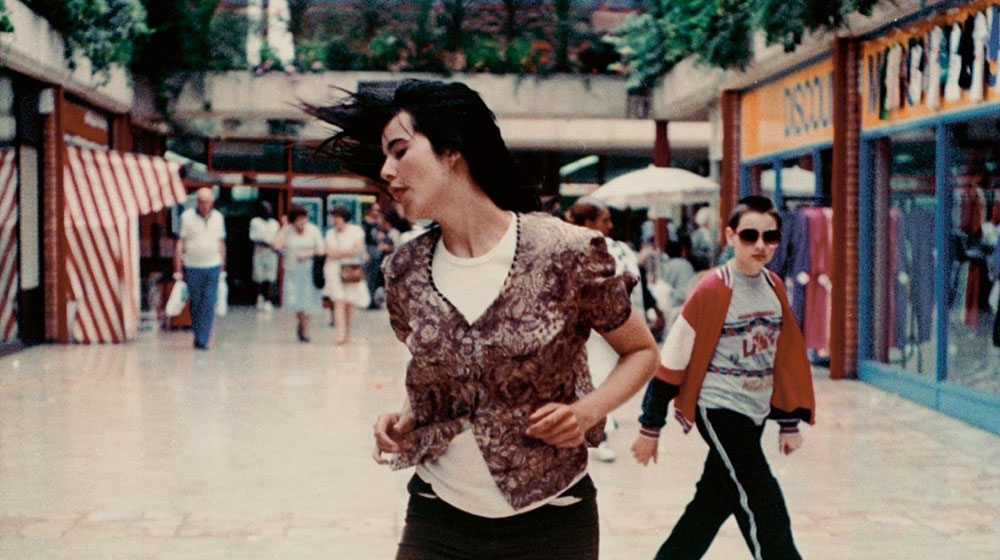A woman sways and twists and turns as strangers pass by—most glance, some stare, and a few dance along with her. Gillian Wearing’s Dancing in Peckham (1994) documents the artist dancing with abandon in a train station inside a shopping center in South London. The audio consists of the echoey background noise of the train station; absent is the unknown music playing in Wearing’s head to which she dances.
Shot on a handheld camcorder, the 25-minute video unfolds in a plain, pixelated style. It is often noted that Dancing in Peckham marks the first time Wearing appeared as the subject in one of her works, less often that Wearing dons the mask of a stranger. Her performance doubles as a reenactment of an anonymous woman she observed dancing at a jazz concert at the Royal Festival Hall on London’s South Bank. Self-presentation and performance are fused to create a work that is equally a self-portrait and a portrait of a stranger, both a documentation of a performance and a performance of a performance. Wearing dances as though nobody were watching, only by watching someone dance as though nobody were watching. All we hear is the white noise, all we see is a mask of a mask.
The static camera captures motion that, loose and unburdened on its surface, is fundamentally constrained and stifled. Wearing’s body flails, but remains restricted to the soft spotlight of the skylight sunshine. A woman rushes past, gaze fixed on Wearing, arms weighed down by shopping bags. A boy holding an ice cream cone stares at her, mesmerized, until he is pulled away by his mother. Dancing in Peckham only gestures toward the freedom encoded in Wearing’s movements. Fleeting moments of joy become repetitive, then boring. We watch, hypnotized by a facade in motion. Wearing approaches emotional release and commuters proceed towards unknowable destinations until the video loops—the beginning indistinguishable from the end.
Showing at MoMA PS1 30 years after its conception, the video foreshadows more prevalent and less free modes of public dancing readily seen today. Like the train station inside the mall—where travelers become shoppers and motion turns to profit—Wearing commodified self-documented amateur dance long before social media would take on the task.
Wearing, or the anonymous woman by which she was inspired, no longer evokes the cinematic trope of a girl dancing freely in her bedroom. Instead, she brings to mind a girl propping an iPhone up at eye-level, body boxed in by the rectangular sightline of its camera, beginning to dance—not much like Wearing, but also not entirely unlike her. Today’s girl could be in her bedroom or a train station inside a mall. She would dance the same in either space: interiors are exteriorized and exteriors are interiorized. Seen but not watched, the video loops, and she begins again.
Gillian Wearing: Dancing in Peckham is on view through January 6 at MoMA PS1.



